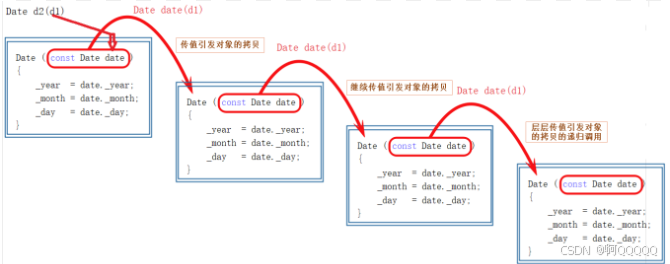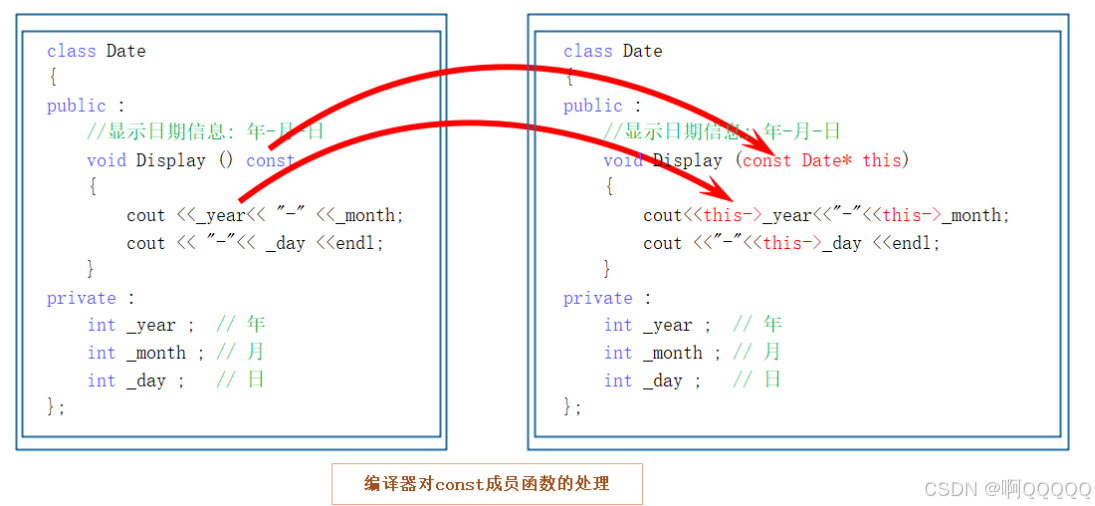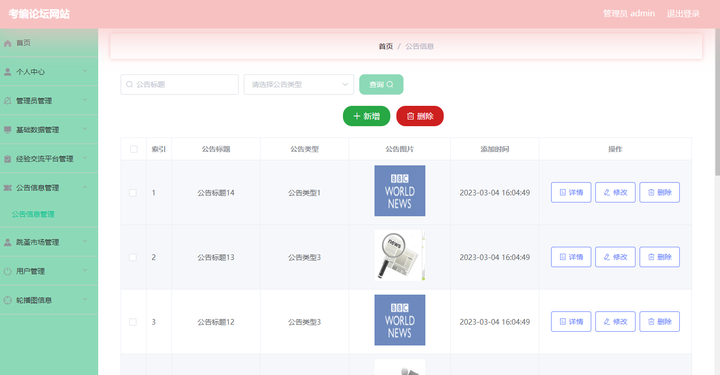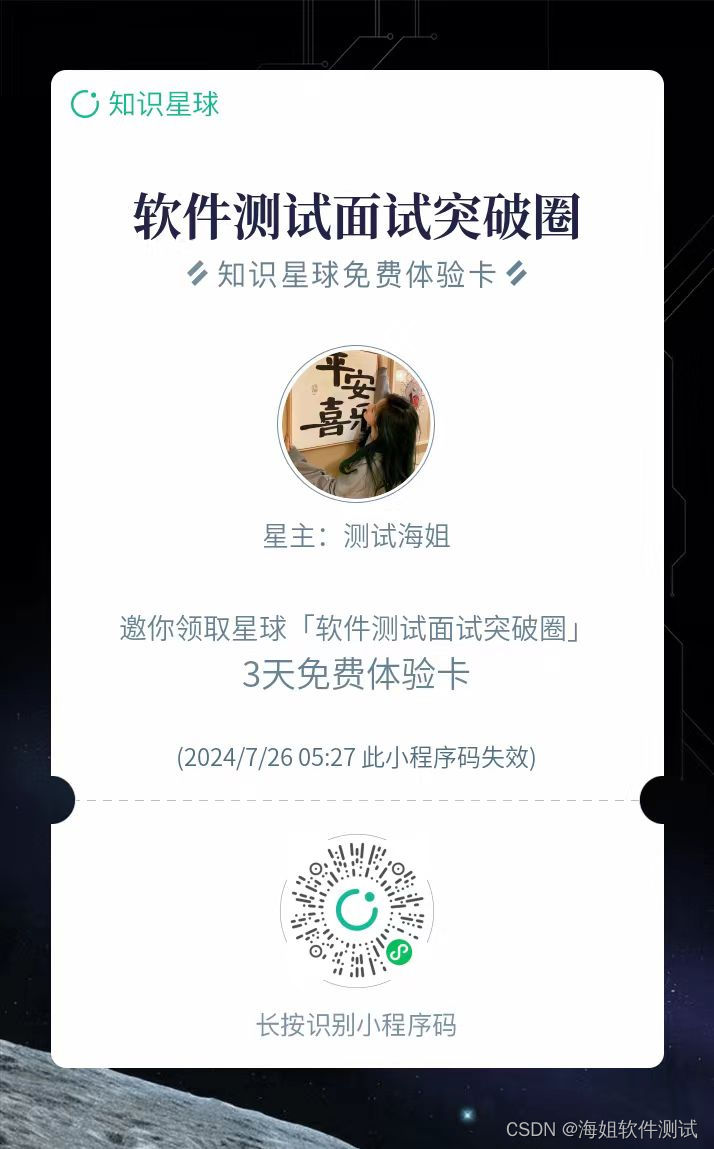目录
面向过程和面向对象的初步认识
类的引入
类的定义
类的访问限定符及封装
访问限定符
封装
类的作用域
类的实例化
类对象模型
如何计算类对象大小
结构体内存对齐规则
this指针
this指针的引出
this指针的特性
类的6个默认成员函数
构造函数
概念
特性
析构函数
概念
特性
拷贝构造函数
概念
特性
赋值运算符重载
运算符重载
赋值运算符重载
前置++重载和后置++重载
const成员
取地址及const取地址操作符重载
友元
友元函数
友元类
面向过程和面向对象的初步认识
C语言是面向过程的,其核心在于过程,通常分析出问题的步骤然后进行调用函数进行解决,过程中的每一步都需要进行手动操作实现。
C++是面向对象的,也就是关注的是对象并不关注对象是怎么实现的对应操作的。
以洗衣服为例子,对于面向过程而言整个过程就是用盆子接水->放衣服->放洗衣粉->手搓->倒水->接水->放洗衣粉->...
而对于面向对象而言,相对就没有这么繁琐了,对象就是人、洗衣机、衣服、洗衣粉,我将衣服放入洗衣机中放入洗衣粉,然后打开洗衣机就可以了。至于洗衣机是怎么洗衣服的我并不需要关注。
类的引入
typedef int DataType;
struct Stack
{void Init(size_t capacity){_array = (DataType*)malloc(sizeof(DataType) * capacity);if (nullptr == _array){perror("malloc申请空间失败");return;}_capacity = capacity;_size = 0;}void Push(const DataType& data){// 扩容_array[_size] = data;++_size;}DataType Top(){return _array[_size - 1];}void Destroy(){if (_array){free(_array);_array = nullptr;_capacity = 0;_size = 0;}}DataType* _array;size_t _capacity;size_t _size;
};
int main()
{Stack s;s.Init(10);s.Push(1);s.Push(2);s.Push(3);cout << s.Top() << endl;s.Destroy();return 0;
}像这样的我们通常在C++中以类class实现。
类的定义
class className{// 类体:由成员函数和成员变量组成}; // 一定要注意后面的分号
成员函数。
class student
{
public:void print(){cout << name << " " << scores; }
private:string name;double scores;
};class student
{
public:void print();
private:string name;double scores;
};在.cpp文件中需要访问类域:
void student::print()
{cout << name << " " << scores << endl ;
}类的访问限定符及封装
访问限定符
C++实现封装的方式:用类将对象的属性与方法结合在一块,让对象更加完善,通过访问权限选

封装
面向对象的三大特性: 封装、继承、多态 。在类和对象阶段,主要是研究类的封装特性,那什么是封装呢?封装:将数据和操作数据的方法进行有机结合,隐藏对象的属性和实现细节,仅对外公开接口来和对象进行交互。封装本质上是一种管理,让用户更方便使用类 。比如:对于电脑这样一个复杂的设备,提供给用户的就只有开关机键、通过键盘输入,显示器, USB 插孔等,让用户和计算机进行交互,完成日常事务。但实际上电脑真正工作的却是 CPU 、显卡、内存等一些硬件元件。对于计算机使用者而言,不用关心内部核心部件,比如主板上线路是如何布局的, CPU 内部是如何设计的等,用户只需要知道,怎么开机、怎么通过键盘和鼠标与计算机进行交互即可。因此 计算机厂商在出厂时,在外部套上壳子,将内部实现细节隐藏起来,仅仅对外提供开关机、鼠标以及键盘插孔等,让用户可以与计算机进行交互即可 。

类的作用域
类的实例化
用类类型创建对象的过程,称为类的实例化1. 类是对对象进行描述的 ,是一个 模型 一样的东西,限定了类有哪些成员,定义出一个类 并没有分配实际的内存空间 来存储它;比如:入学时填写的学生信息表,表格就可以看成是一个类,来描述具体学生信息。2. 一个类可以实例化出多个对象, 实例化出的对象 占用实际的物理空间,存储类成员变量Person 类是没有空间的,只有 Person 类实例化出的对象才有具体的年龄。3. 做个比方。 类实例化出对象就像现实中使用建筑设计图建造出房子,类就像是设计图 ,只设计出需要什么东西,但是并没有实体的建筑存在,同样类也只是一个设计,实例化出的对象才能实际存储数据,占用物理空间。总之,类跟struct一样都看成是自定义类型即可;
类对象模型
如何计算类对象大小
先定义一个简单的类;
class A
{
public:
void PrintA()
{cout<<_a<<endl;
}
private:
char _a;
};类中既有成员函数又有成员变量,那么如何计算类的大小呢?
类的内存大小是指的类成员变量的所占的内存大小,成员函数并不计入在内;其计算方式与结构体的计算大小方式相同;不同的是如果一个类是空的那么他的大小不是0而是1;
结构体内存对齐规则
this指针
this指针的引出
先来定义一个日期类;
class Date
{
public:void Init(int year, int month, int day){_year = year;_month = month;_day = day;}void Print(){cout <<_year<< "-" <<_month << "-"<< _day <<endl;}
private:int _year; // 年int _month; // 月int _day; // 日
};
int main()
{Date d1, d2;d1.Init(2022,1,11);d2.Init(2022, 1, 12);d1.Print();d2.Print();return 0;
}this指针的特性
class date
{
public:void print(){cout << _year << "-" << _month << "-"<<_day; }
private: int _year;int _month;int _day;
};class date
{
public:void print(){cout << this->_year << "-" <<this-> _month << "-"<<this->_day; }
private: int _year;int _month;int _day;
};
二者等同。
类的6个默认成员函数

构造函数
概念
class Date
{
public:void Init(int year, int month, int day){_year = year;_month = month;_day = day;}void Print(){cout << _year << "-" << _month << "-" << _day << endl;}
private:int _year;int _month;int _day;
};
int main()
{Date d1;d1.Init(2022, 7, 5);d1.Print();Date d2;d2.Init(2022, 7, 6);d2.Print();return 0;
}特性
class Date
{
public:// 1.无参构造函数Date(){}// 2.带参构造函数Date(int year, int month, int day){_year = year;_month = month;_day = day;}private:int _year;int _month;int _day;};void TestDate(){Date d1; // 调用无参构造函数Date d2(2015, 1, 1); // 调用带参的构造函数// 注意:如果通过无参构造函数创建对象时,对象后面不用跟括号,否则就成了函数声明// 以下代码的函数:声明了d3函数,该函数无参,返回一个日期类型的对象// warning C4930: “Date d3(void)”: 未调用原型函数(是否是有意用变量定义的?)Date d3();}class Date{public:/*// 如果用户显式定义了构造函数,编译器将不再生成Date(int year, int month, int day){_year = year;_month = month;_day = day;}*/void Print(){cout << _year << "-" << _month << "-" << _day << endl;}private:int _year;int _month;int _day;};int main(){// 将Date类中构造函数屏蔽后,代码可以通过编译,因为编译器生成了一个无参的默认构造函数// 将Date类中构造函数放开,代码编译失败,因为一旦显式定义任何构造函数,编译器将不再生成// 无参构造函数,放开后报错:error C2512: “Date”: 没有合适的默认构造函数可用Date d1;return 0;}
class Time
{
public:Time() {cout << "Time()" << endl;_hour = 0;_minute = 0;_second = 0;}private: int _hour; int _minute; int _second;
};
class Date
{
private:// 基本类型(内置类型)int _year;int _month;int _day;// 自定义类型Time _t;
};
int main()
{Date d;return 0;
}
class Time
{
public:Time(){cout << "Time()" << endl;_hour = 0;_minute = 0;_second = 0;}
private:int _hour;int _minute;int _second;
};
class Date
{
private:// 基本类型(内置类型)int _year = 1970;int _month = 1;int _day = 1;// 自定义类型Time _t;
};
int main()
{Date d;return 0;
}class Date
{
public:Date(){_year = 1900;_month = 1;_day = 1;}Date(int year = 1900, int month = 1, int day = 1){_year = year;_month = month;_day = day;}
private:int _year;int _month;int _day;
};
// 以下测试函数能通过编译吗?
void Test()
{Date d1;
}析构函数
概念
通过前面构造函数的学习,我们知道一个对象是怎么来的,那一个对象又是怎么没呢的?析构函数:与构造函数功能相反,析构函数不是完成对对象本身的销毁,局部对象销毁工作是由编译器完成的。而 对象在销毁时会自动调用析构函数,完成对象中资源的清理工作
特性
ypedef int DataType;
class Stack
{
public:Stack(size_t capacity = 3){_array = (DataType*)malloc(sizeof(DataType) * capacity);if (NULL == _array){perror("malloc申请空间失败!!!");return;}_capacity = capacity;_size = 0;}void Push(DataType data){// CheckCapacity();_array[_size] = data;_size++;}// 其他方法...~Stack(){if (_array){free(_array);_array = NULL;_capacity = 0;_size = 0;}}
private:DataType* _array;int _capacity;int _size;
};
void TestStack()
{Stack s;s.Push(1);s.Push(2);
}
class Time
{
public:~Time(){cout << "~Time()" << endl;}
private:int _hour;int _minute;int _second;
};
class Date
{
private:// 基本类型(内置类型)int _year = 1970;int _month = 1;int _day = 1;// 自定义类型Time _t;
};
int main()
{Date d;return 0;
}
// 程序运行结束后输出:~Time()
// 在main方法中根本没有直接创建Time类的对象,为什么最后会调用Time类的析构函数?
// 因为:main方法中创建了Date对象d,而d中包含4个成员变量,其中_year, _month,
_day三个是
// 内置类型成员,销毁时不需要资源清理,最后系统直接将其内存回收即可;而_t是Time类对
象,所以在d销毁时,要将其内部包含的Time类的_t对象销毁,所以要调用Time类的析构函数。但是:
main函数
// 中不能直接调用Time类的析构函数,实际要释放的是Date类对象,所以编译器会调用Date
类的析构函
// 数,而Date没有显式提供,则编译器会给Date类生成一个默认的析构函数,目的是在其内部
调用Time
// 类的析构函数,即当Date对象销毁时,要保证其内部每个自定义对象都可以正确销毁
// main函数中并没有直接调用Time类析构函数,而是显式调用编译器为Date类生成的默认析
构函数
// 注意:创建哪个类的对象则调用该类的析构函数,销毁那个类的对象则调用该类的析构函数拷贝构造函数
概念
拷贝构造函数 : 只有单个形参 ,该形参是对本 类类型对象的引用 ( 一般常用 const 修饰 ) ,在用 已存在的类类型对象创建新对象时由编译器自动调用
特性

class Time
{
public:Time(){_hour = 1;_minute = 1;_second = 1;}Time(const Time& t){_hour = t._hour;_minute = t._minute;_second = t._second;cout << "Time::Time(const Time&)" << endl;}
private:int _hour;int _minute;int _second;
};
class Date
{
private:// 基本类型(内置类型)int _year = 1970;int _month = 1;int _day = 1;// 自定义类型Time _t;
};
int main()
{Date d1;// 用已经存在的d1拷贝构造d2,此处会调用Date类的拷贝构造函数// 但Date类并没有显式定义拷贝构造函数,则编译器会给Date类生成一个默认的拷贝构//造函数Date d2(d1); return 0;
}// 这里会发现下面的程序会崩溃掉?这里就需要我们以后讲的深拷贝去解决。
typedef int DataType;
class Stack
{
public:Stack(size_t capacity = 10){_array = (DataType*)malloc(capacity * sizeof(DataType));if (nullptr == _array){perror("malloc申请空间失败");return;}_size = 0;_capacity = capacity;}void Push(const DataType& data){// CheckCapacity();_array[_size] = data;_size++;}~Stack(){if (_array){free(_array);_array = nullptr;_capacity = 0;_size = 0;}}
private:DataType* _array;size_t _size;size_t _capacity;
};
int main()
{Stack s1;s1.Push(1);s1.Push(2);s1.Push(3);s1.Push(4);Stack s2(s1);return 0;
}
class Date
{
public:Date(int year, int minute, int day){cout << "Date(int,int,int):" << this << endl;}Date(const Date& d){cout << "Date(const Date& d):" << this << endl;}~Date(){cout << "~Date():" << this << endl;}
private:int _year;int _month;int _day;
};
Date Test(Date d)
{Date temp(d);return temp;
}
int main()
{Date d1(2022, 1, 13);Test(d1);return 0;
}

赋值运算符重载
运算符重载
C++ 为了增强代码的可读性引入了运算符重载 , 运算符重载是具有特殊函数名的函数 ,也具有其返回值类型,函数名字以及参数列表,其返回值类型与参数列表与普通的函数类似。函数名字为:关键字 operator 后面接需要重载的运算符符号 。函数原型: 返回值类型 operator 操作符 ( 参数列表 )注意:不能通过连接其他符号来创建新的操作符:比如 operator@重载操作符必须有一个类类型参数用于内置类型的运算符,其含义不能改变,例如:内置的整型 + ,不 能改变其含义作为类成员函数重载时,其形参看起来比操作数数目少 1 ,因为成员函数的第一个参数为隐藏的 this.* :: sizeof ?: . 注意以上 5 个运算符不能重载。这个经常在笔试选择题中出现。
// 全局的operator==
class Date
{
public:Date(int year = 1900, int month = 1, int day = 1){_year = year;_month = month;_day = day;}//private:int _year;int _month;int _day;
};
// 这里会发现运算符重载成全局的就需要成员变量是公有的,那么问题来了,封装性如何保证?
// 这里其实可以用我们后面学习的友元解决,或者干脆重载成成员函数。
bool operator==(const Date& d1, const Date& d2)
{return d1._year == d2._year&& d1._month == d2._month&& d1._day == d2._day;
}
void Test()
{Date d1(2018, 9, 26);Date d2(2018, 9, 27);cout << (d1 == d2) << endl;
}
class Date
{
public:Date(int year = 1900, int month = 1, int day = 1){_year = year;_month = month;_day = day;}// bool operator==(Date* this, const Date& d2)// 这里需要注意的是,左操作数是this,指向调用函数的对象bool operator==(const Date& d2){return _year == d2._year&& _month == d2._month&& _day == d2._day;}
private:int _year;int _month;int _day;
};赋值运算符重载
class Date
{
public :Date(int year = 1900, int month = 1, int day = 1){_year = year;_month = month;_day = day;}Date (const Date& d){_year = d._year;_month = d._month;_day = d._day;}Date& operator=(const Date& d){if(this != &d){_year = d._year;_month = d._month;_day = d._day;}return *this;}
private:
int _year ;int _month ;int _day ;
};class Date
{
public:Date(int year = 1900, int month = 1, int day = 1){_year = year;_month = month;_day = day;}int _year;int _month;int _day;
};
// 赋值运算符重载成全局函数,注意重载成全局函数时没有this指针了,需要给两个参数
Date& operator=(Date& left, const Date& right)
{if (&left != &right){left._year = right._year;left._month = right._month;left._day = right._day;}return left;
}
// 编译失败:
// error C2801: “operator =”必须是非静态成员
class Time
{
public:Time(){_hour = 1;_minute = 1;_second = 1;}Time& operator=(const Time& t){if (this != &t){_hour = t._hour;_minute = t._minute;_second = t._second;}return *this;}
private:int _hour;int _minute;int _second;
};
class Date
{
private:// 基本类型(内置类型)int _year = 1970;int _month = 1;int _day = 1;// 自定义类型Time _t;
};
int main()
{Date d1;Date d2;d1 = d2;return 0;
}// 这里会发现下面的程序会崩溃掉?这里就需要我们以后讲的深拷贝去解决。
typedef int DataType;
class Stack
{
public:Stack(size_t capacity = 10){_array = (DataType*)malloc(capacity * sizeof(DataType));if (nullptr == _array){perror("malloc申请空间失败");return;}_size = 0;_capacity = capacity;}void Push(const DataType& data){// CheckCapacity();_array[_size] = data;_size++;}~Stack(){if (_array){free(_array);_array = nullptr;_capacity = 0;_size = 0;}}
private:DataType* _array;size_t _size;size_t _capacity;
};
int main()
{Stack s1;s1.Push(1);s1.Push(2);s1.Push(3);s1.Push(4);Stack s2;s2 = s1;return 0;
}
前置++重载和后置++重载
class Date
{
public:Date(int year = 1900, int month = 1, int day = 1){_year = year;_month = month;_day = day;}// 前置++:返回+1之后的结果// 注意:this指向的对象函数结束后不会销毁,故以引用方式返回提高效率Date& operator++(){_day += 1;return *this;}// 后置++:// 前置++和后置++都是一元运算符,为了让前置++与后置++形成能正确重载// C++规定:后置++重载时多增加一个int类型的参数,但调用函数时该参数不用传递,编译器//自动传递// 注意:后置++是先使用后+1,因此需要返回+1之前的旧值,故需在实现时需要先将this保存//一份,然后给this + 1// 而temp是临时对象,因此只能以值的方式返回,不能返回引用Date operator++(int){Date temp(*this);_day += 1;return temp;}
private:int _year;int _month;int _day;
};int main()
{Date d;Date d1(2022, 1, 13);d = d1++; // d: 2022,1,13 d1:2022,1,14d = ++d1; // d: 2022,1,15 d1:2022,1,15return 0;
}
const成员
将 const 修饰的 “ 成员函数 ” 称之为 const 成员函数 , const 修饰类成员函数,实际修饰该成员函数隐含的 this 指针 ,表明在该成员函数中 不能对类的任何成员进行修改。

class Date
{
public:Date(int year, int month, int day){_year = year;_month = month;_day = day;}void Print(){cout << "Print()" << endl;cout << "year:" << _year << endl;cout << "month:" << _month << endl;cout << "day:" << _day << endl << endl;}void Print() const{cout << "Print()const" << endl;cout << "year:" << _year << endl;cout << "month:" << _month << endl;cout << "day:" << _day << endl << endl;}
private:int _year; // 年int _month; // 月int _day; // 日
};
void Test()
{Date d1(2022, 1, 13); d1.Print(); const Date d2(2022, 1, 13); d2.Print();
}取地址及const取地址操作符重载
class Date{public:Date* operator&(){return this;}const Date* operator&()const{return this;}private:int _year; // 年int _month; // 月int _day; // 日};友元
概念
友元提供了一种突破封装的方式,有时提供了便利。但是友元会增加耦合度,破坏了封装,所以 友元不宜多用。 友元分为:友元函数和友元类
友元函数
问题:现在尝试去重载 operator<< ,然后发现没办法将 operator<< 重载成成员函数。 因为 cout 的输出流对象和隐含的 this 指针在抢占第一个参数的位置 。 this 指针默认是第一个参数也就是左操作数了。但是实际使用中 cout 需要是第一个形参对象,才能正常使用。所以要将 operator<< 重载成全局函数。但又会导致类外没办法访问成员,此时就需要友元来解决。 operator>> 同理。
class Date{public:Date(int year, int month, int day): _year(year), _month(month), _day(day){}// d1 << cout; -> d1.operator<<(&d1, cout); 不符合常规调用
// 因为成员函数第一个参数一定是隐藏的this,所以d1必须放在<<的左侧ostream& operator<<(ostream& _cout){_cout << _year << "-" << _month << "-" << _day << endl;return _cout;}private:int _year;int _month;int _day;};class Date
{friend ostream& operator<<(ostream& _cout, const Date& d);friend istream& operator>>(istream& _cin, Date& d);
public:Date(int year = 1900, int month = 1, int day = 1): _year(year), _month(month), _day(day){}
private:int _year;int _month;int _day;
};
ostream& operator<<(ostream& _cout, const Date& d)
{_cout << d._year << "-" << d._month << "-" << d._day;return _cout;
}
istream& operator>>(istream& _cin, Date& d)
{_cin >> d._year;_cin >> d._month;_cin >> d._day;return _cin;
}
int main()
{Date d;cin >> d;cout << d << endl;return 0;
}说明:
友元函数可访问类的私有和保护成员,但不是类的成员函数
友元函数不能用const修饰
友元函数可以在类定义的任何地方声明,不受类访问限定符限制
一个函数可以是多个类的友元函数
友元函数的调用与普通函数的调用原理相同
友元类
友元类的所有成员函数都可以是另一个类的友元函数,都可以访问另一个类中的非公有成员。友元关系是单向的,不具有交换性。比如上述 Time 类和 Date 类,在 Time 类中声明 Date 类为其友元类,那么可以在 Date 类中直接访问 Time 类的私有成员变量,但想在 Time 类中访问 Date 类中私有的成员变量则不行。友元关系不能传递如果 C 是 B 的友元, B 是 A 的友元,则不能说明 C 时 A 的友元。友元关系不能继承,在继承位置再给大家详细介绍。
class Time{friend class Date; // 声明日期类为时间类的友元类,则在日期类中就直接访问Time类//中的私有成员变量public:Time(int hour = 0, int minute = 0, int second = 0): _hour(hour), _minute(minute), _second(second){}private:int _hour;int _minute;int _second;};class Date{public:Date(int year = 1900, int month = 1, int day = 1): _year(year), _month(month), _day(day){}void SetTimeOfDate(int hour, int minute, int second){// 直接访问时间类私有的成员变量_t._hour = hour;_t._minute = minute;_t._second = second;}private:int _year;int _month;int _day;Time _t; };![前端vue打印后端对象为[object,object]](https://i-blog.csdnimg.cn/direct/253030d69a4540c1877a263757bc96dd.png)


















